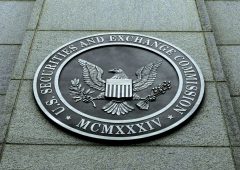Decentralized Protocols Dominate Crypto Lending by End of 2024
15.04.2025 19:00 2 min. read Alexander Stefanov
The crypto lending landscape is undergoing a quiet transformation. While centralized giants like Tether continue to dominate headlines, the real momentum is building elsewhere—in decentralized finance.
A recent report from Galaxy shows that by the close of 2024, DeFi lending volumes had nearly doubled those of centralized platforms, signaling a major realignment in how capital flows through the digital economy.
Total crypto loans—excluding CDP-based stablecoins—stood at roughly $30 billion as of December 31. But once those collateral-backed stablecoins are factored in, the market size expands to $36.5 billion. Still, even with this broader scope, the industry is down 43% from its late-2021 peak, dragged by a collapse in borrower demand and a wave of lender failures.
Tether, along with Galaxy and Ledn, holds a commanding 88.6% share of the centralized loan market, managing a combined $9.9 billion. These firms still matter—especially in institutional circles where OTC deals, prime brokerage, and hybrid off-chain lending are common. Yet trust issues linger. After multiple centralized lenders went under between 2022 and 2023, the appetite for off-chain credit has noticeably cooled.
Meanwhile, DeFi is thriving. Loans across 20 decentralized platforms and a dozen blockchains climbed to $19.1 billion in Q4 2024, marking an eye-popping 959% rebound from the lows of 2022. The resurgence is driven by DeFi’s transparency, real-time risk management, and composability—features that appeal to users wary of centralized blowups.
Galaxy’s report doesn’t downplay the continued relevance of CeFi, particularly for large institutions. But the numbers tell a clear story: capital is increasingly flowing toward decentralized protocols that offer trustless infrastructure and resilience under pressure.
-
1
Singapore Court Orders Multichain Liquidation After Major Exploit
16.05.2025 17:00 1 min. read -
2
Binance Pushes Back Against FTX Lawsuit, Calls Claims “Baseless”
21.05.2025 8:00 2 min. read -
3
Ark Invest Buys Into eToro as Shares Surge on Nasdaq Debut
16.05.2025 8:00 1 min. read -
4
New Ethereum Initiative Targets Institutional-Grade Security Standards
16.05.2025 14:00 1 min. read -
5
JPMorgan CEO Warns Market Is Overlooking Risks from Tariff Tensions
22.05.2025 8:00 1 min. read
ARK Invest Makes Bold Bet on Circle as Stablecoin Giant Enters Wall Street
Circle’s arrival on the New York Stock Exchange sent shockwaves through the market, and Cathie Wood’s ARK Invest wasted no time jumping in.
WazirX Restructuring Plan Blocked by Singapore High Court
WazirX’s bid to restructure and compensate victims of a $230 million hack has been rejected by the Singapore High Court, putting the exchange’s recovery roadmap in limbo.
Tariffs Not a Threat to S&P Momentum, Says Fundstrat’s Tom Lee
Fundstrat’s Tom Lee believes that lingering caution in the stock market could actually be setting the stage for another bullish breakout.
Circle Soars in NYSE Debut Amid Surging Stablecoin Interest — But Not Everyone’s Cheering
Circle, the company behind the USDC stablecoin, made a dramatic entrance onto the New York Stock Exchange on June 5, with its stock skyrocketing 167% by market close.
-
1
Singapore Court Orders Multichain Liquidation After Major Exploit
16.05.2025 17:00 1 min. read -
2
Binance Pushes Back Against FTX Lawsuit, Calls Claims “Baseless”
21.05.2025 8:00 2 min. read -
3
Ark Invest Buys Into eToro as Shares Surge on Nasdaq Debut
16.05.2025 8:00 1 min. read -
4
New Ethereum Initiative Targets Institutional-Grade Security Standards
16.05.2025 14:00 1 min. read -
5
JPMorgan CEO Warns Market Is Overlooking Risks from Tariff Tensions
22.05.2025 8:00 1 min. read


